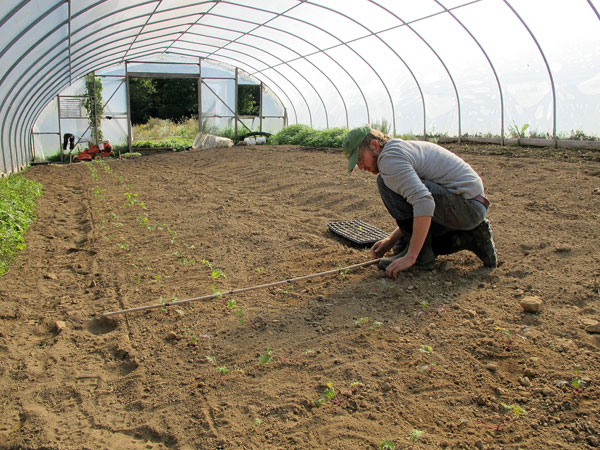-

Erin Donahue -

Christina Barkanic -

Brittany Trott -

Emily Wiley -

Jessica Reilley -

Chris Raines -

Will Nichols -

Emily Reddy -

Michele Marchetti -

Michele Frank -

James Gherardi -

Kit Henshaw -

Christina and Erin -

Kim Tait -

Erin McKinney -

Steve Spanelli -

Sam Komlenic -

Katherine Taylor Grofic -

James Eisenstein -

Jamie Oberdick -

Anna Lombardo -

LacCreta Holland -

Tony Ricci -

Local Food Journey -

Laura Young -

Kristin Camplese -

Harrison's Fresh + Local -

Danielle Matalonis -

Kristine A. -

Linda Weaver -

Naomi Elle Schwartz -

Dana Stuchul -

Cara McShane -

Brittany Smith -

Jessica Illuzzi - Frosty
-

Jessica Paholsky -

James Sechrengost -

Brad Yeckley -

Maya Althouse -

Jordan Reabold -

Kim Chase -

Maria Bryant - Alexandrea Scott
Field Notes
Posted by Erin McKinney on 10/25, 2011 at 05:59 AM

Photo credit: Katy Cleary
This week as we are adding more fall greens to the selection of choices, we are embarking on a project that will provide us with the ability to extend the season and have even more greens!
After only finding enough time in the past few months to level out the ground and till the area, this week we’ve finally begun the first of the true construction of our new High Tunnel. The posts are being pounded into the ground, and because this is the ‘Keystone State’, it takes a while when you have to stop and dig out rocks that are in
the way of these important anchors of the structure. There are two High Tunnels up here on the farm already in addition to the greenhouse.
The Greenhouse is what we use to start all the seedlings and transplants because it is thermostatically controlled with propane heaters and exhaust fans. This provides the perfect environment for raising healthy, organic seedlings. It is generally in operation from mid February until about now. So we’ve been cleaning up in there, preparing to wrap it up for the season until those brisk wintery days when the onion seeds need sowed.
The High Tunnels look a lot like a Greenhouse, but the difference is that there is no heat, or exhaust control. They rely totally on passive heating, capturing the warmth of the sun, and then ideally holding that heat for hours much after dark. There is also the capturing of radiant heat that naturally comes from the ground which in the dead of winter the ground can still be emitting as much as four degrees of heat, and when it’s down in the twenties, four degrees actually does make a difference. So this extra warmth allows for plants to get a head start on the season, or hang for a while after the season is done in the
fields.
We plant directly into the soil in the High Tunnels, right into the ground, as opposed to the Greenhouse that has a gravel floor and tables for us to put the flats of seedlings on. This Fall in the High Tunnel that is in production we’ve planted beets, chard, spinach and kales. This early in the ‘extended growing season’ we have to battle the pests that make their way into this buffet of tender new crops. Because there is no exhaust in the High Tunnels it doesn’t take long for them to heat up in there, so we leave the doors open for ventilation. There’s been evidence of rabbits sneaking past the dogs and chowin’ down. One night they went down an entire row of chard that had just been planted, and it probably didn’t even take them more than a half hour. So we’ve been spraying garlic juice in there to deter them for now until the nights get a little cooler and we can close the doors up tight for the night.
This all makes for a very exciting time of year. Wrapping up some projects, and constructing others all while tending to a smaller amount of crops but nonetheless, still acres of work to be done!
![]() Author: Erin McKinney
Author: Erin McKinney
Bio: Tait Farm Farmer | Community Harvest CSA | Lover of Food and Farming | Author of Field Notes, Community News, and Good Earth e-publication for Tait Farm
- Our Local Food Journey comes to an end
- Winter isn’t a quiet time at the farm
- Get the taste of garden season right now by growing herbs indoors
- All you need to know about PASA’s Farming for the Future conference









NO COMMENTS